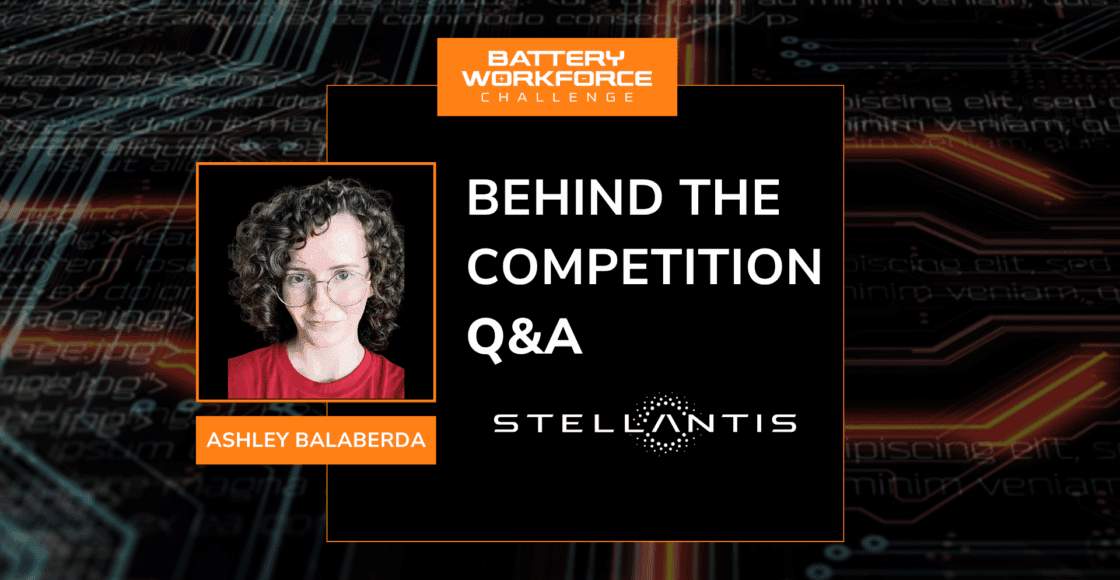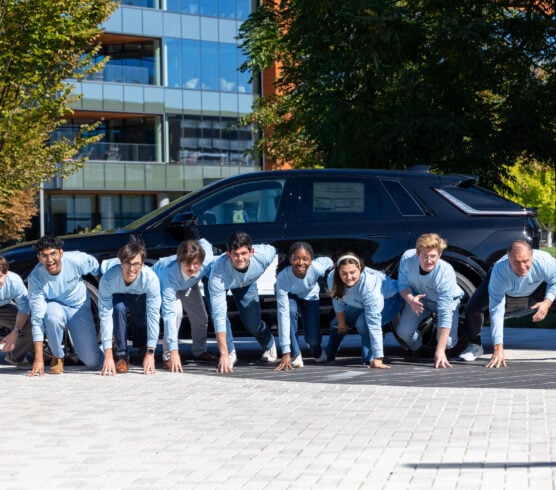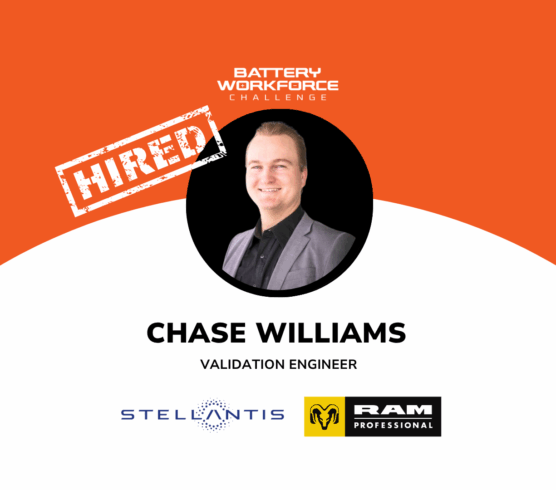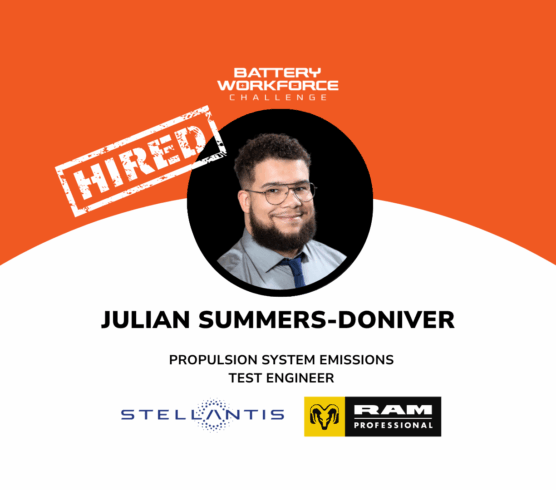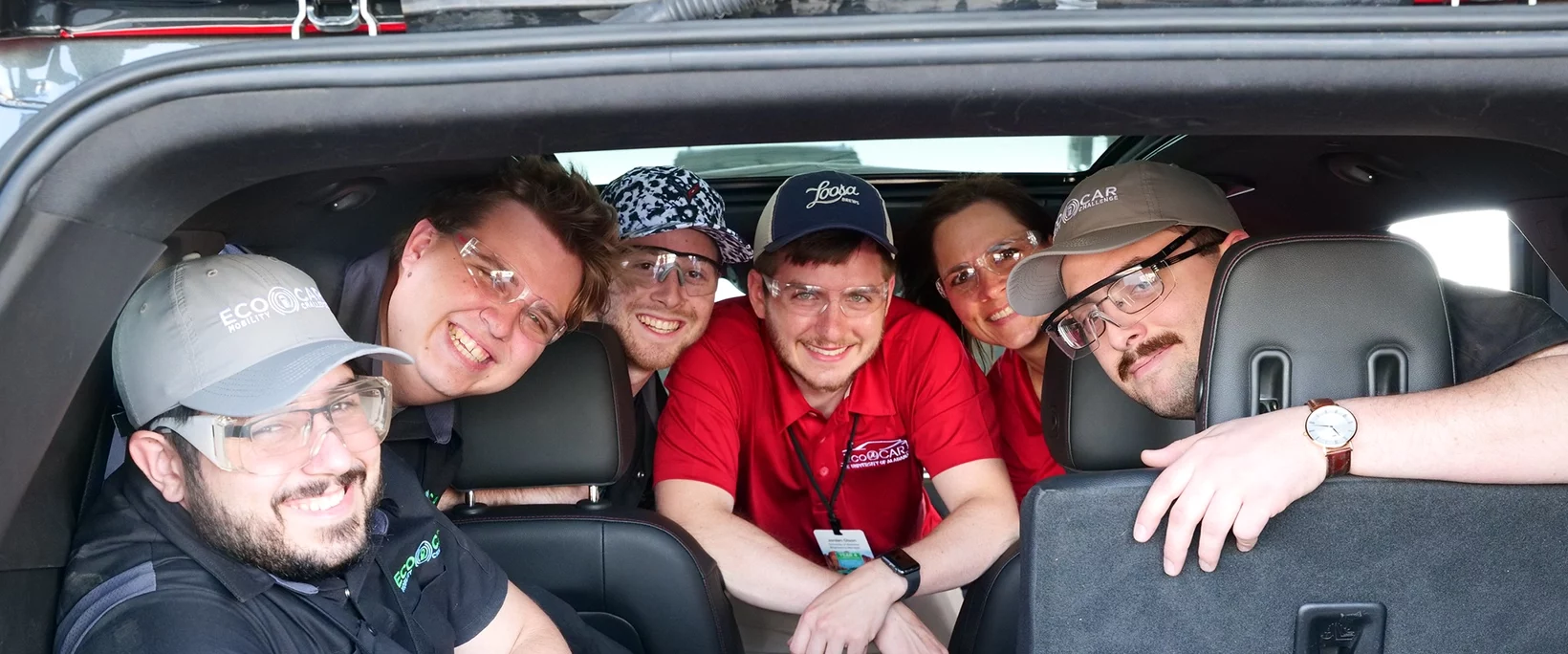By Em Jankauski
Behind every successful team there’s always one highly invested player who is locked in on the coach’s mission. Meet Ashley Balaberda, Stellantis’ project manager for the Battery Workforce Challenge and one of our mission’s critical players.
Balaberda’s responsible for overseeing the overall execution of the BattChallenge on the Stellantis end of the house — from managing costs, timing resources, deliverables and so much more.
She’s the automaker’s eyes and ears on the ground, recommending standout BattChallengers who have shown exceptional commitment, strong academic performance and valuable team contributions for the company’s talent pipeline of emerging engineers.
Balaberda’s worked for Stellantis for more than eight years holding titles such as high voltage battery program manager, drivability and emissions calibration engineer and calibration program manager. She holds a bachelor’s in mechanical engineering from Wayne State University and is currently pursuing a master’s of business administration from the University of Michigan.
Now let’s get to the fun part!
***
Q: What was your first impression of our BattChallengers, and what impresses you about them?
A: “My first real impression of the Battery Workforce Challenge Program came during the year two fall workshop’s key ceremony. What really stood out to me was the energy in the room — the students started doing this impromptu drum roll between every team announcement, and it completely caught on. It was such a simple, spontaneous thing, but it created this contagious sense of excitement and camaraderie.
“What I admire most is that the BattChallengers really embody that work hard, play hard mentality. They’re clearly dedicated and technically sharp, but they also know how to bring fun and spirit to what they do. It was one of those moments where you feel the culture being built in real time — and it made a lasting impression.”
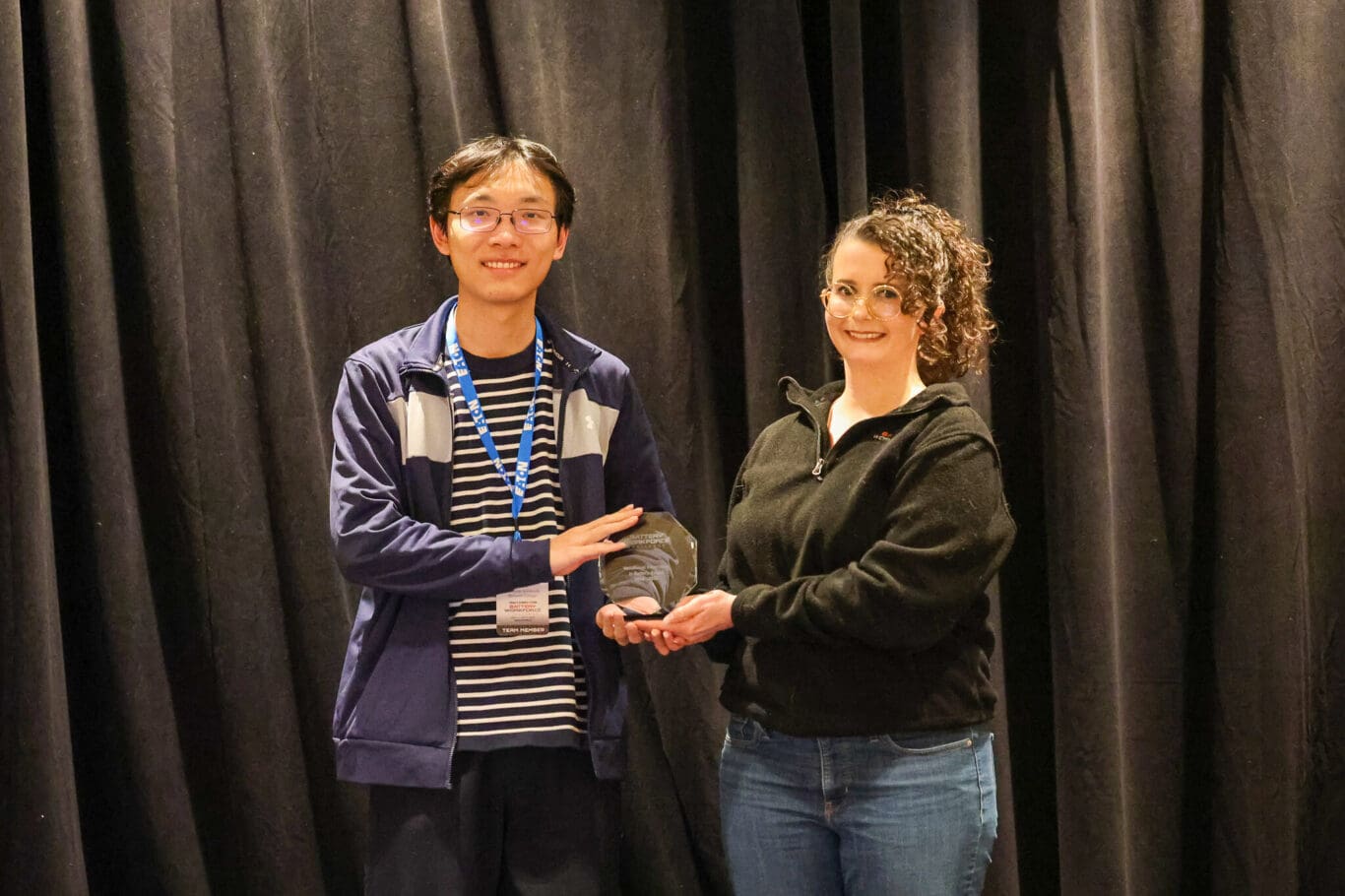
Q: How have you gotten to interact with more BattChallengers who are also interning at Stellantis this summer?
A: “This summer, we have 23 interns from the Battery Workforce Challenge working within Propulsion Systems. I’ve had the opportunity to meet one-on-one with most of them to check in on how they’re settling in and to learn about the projects they’re supporting. At Stellantis, our internships are structured around meaningful, project-based work that contributes directly to the team’s success while offering valuable learning experiences.
“As I spoke with the interns, several mentioned how surprised — and proud — they were to be able to dive right into technical discussions and contribute effectively. They credited their experience in the Battery Workforce Challenge for preparing them so well.”
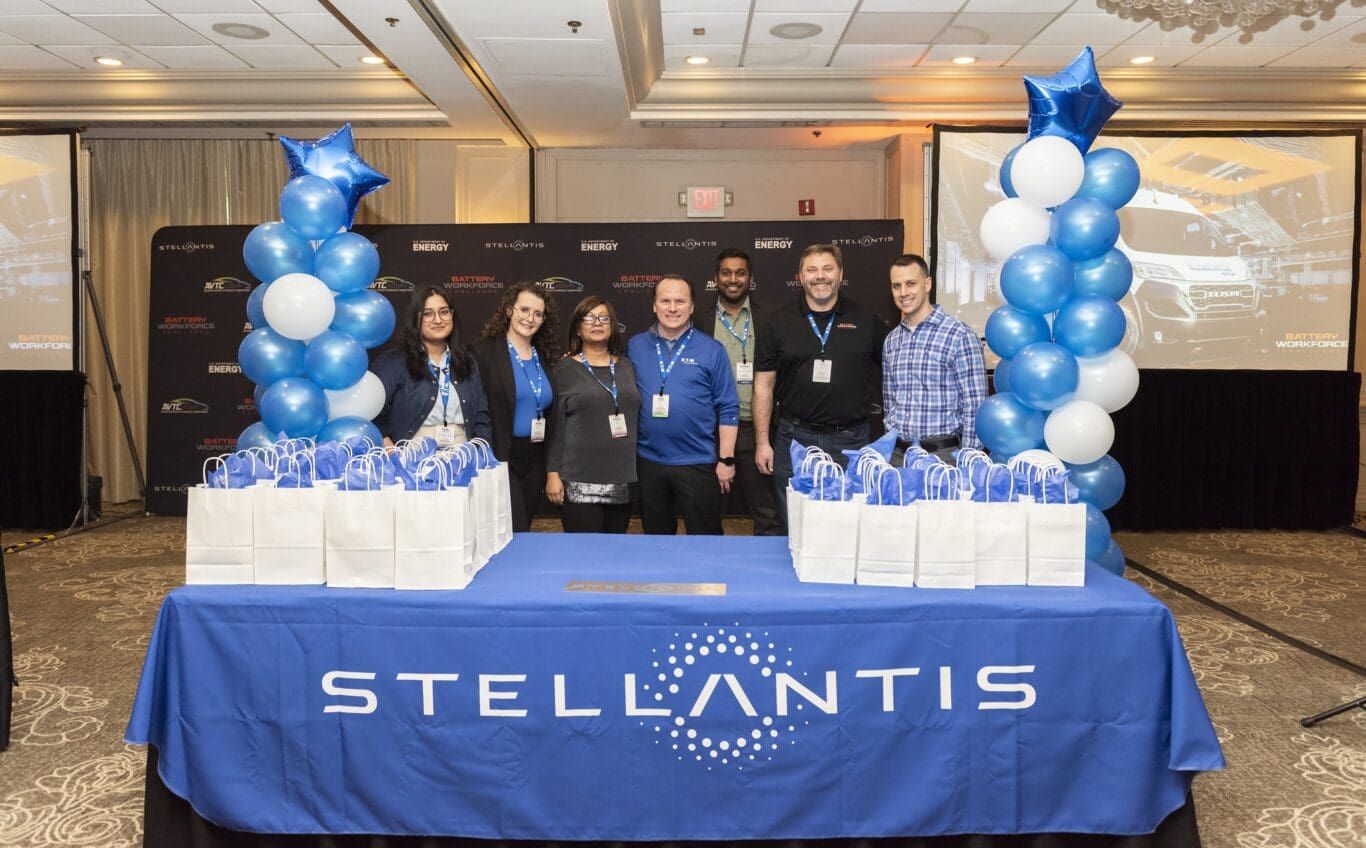
Q: You previously served as a mentor for the University of California, Merced & Merced College’s BattChallenge team. What were you able to accomplish as a mentor?
A: “I started mentoring the University of California, Merced and Merced College team during the year one winter workshop. From the beginning, I realized that one of the most important aspects of effective mentorship is building trust and making students feel comfortable enough to ask questions and share their challenges.”
Q: What inspired you to go into project management?
A: “During my time as an emissions calibration engineer, I was tasked with leading a large and complex service campaign. It was a fast-paced, high-pressure environment, but I really enjoyed the challenge — especially knowing that I was helping solve a significant issue for the company.
“It was my first real opportunity to step into an expert role, and while it wasn’t easy, leading a large cross-functional team felt surprisingly natural. What stood out to me was how powerful active listening can be. By taking the time to truly understand the perspectives of others, I was often able to identify connections and solutions that might otherwise have been overlooked.”
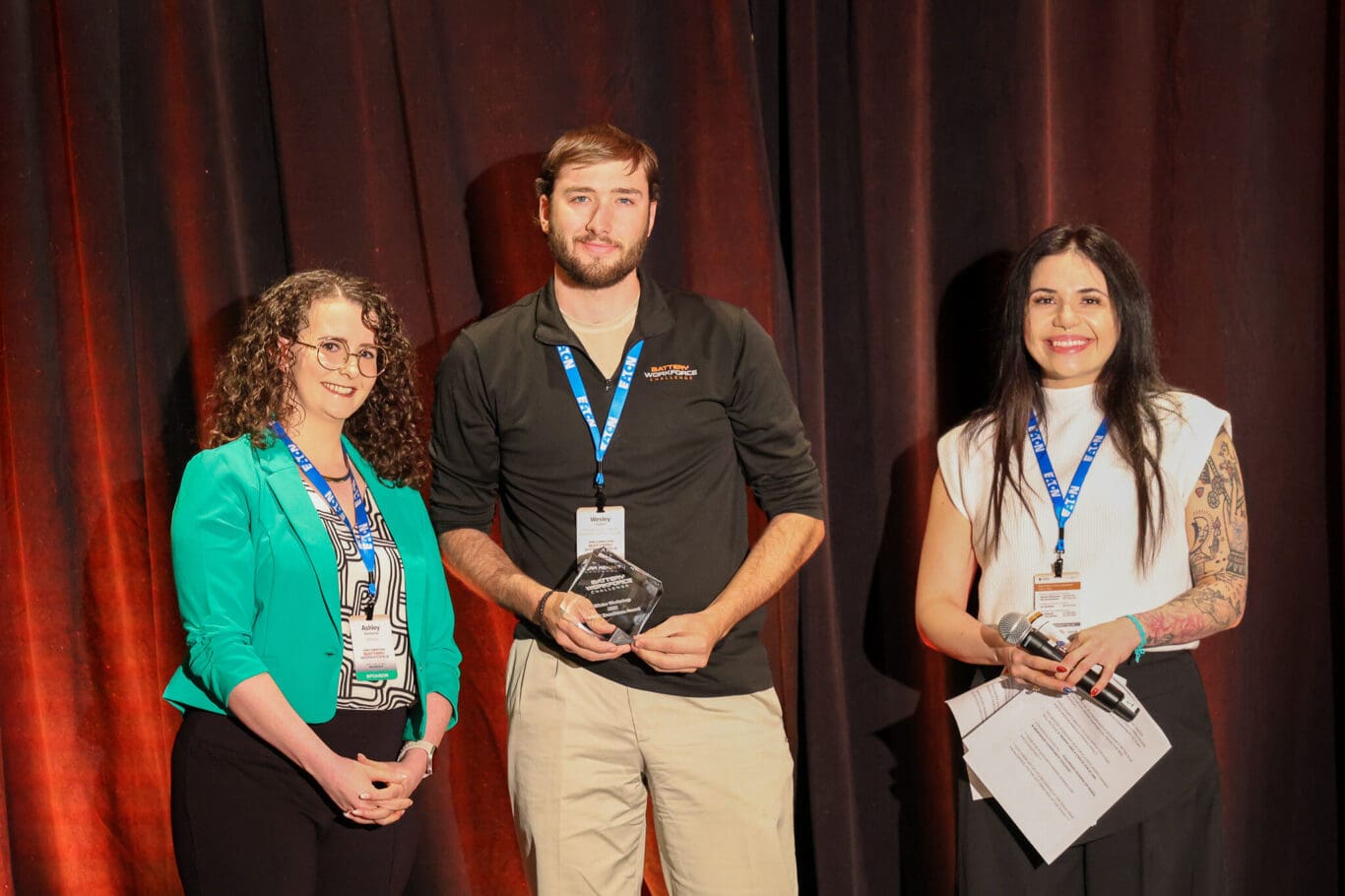
Q: From a project manager’s perspective, how is the BattChallenge beneficial to Stellantis and the RAM brand?
A: “The Battery Workforce Challenge provides Stellantis the opportunity to connect with young professionals who have experience working with hybrid vehicle battery technologies.
“Over the last several years, the demand for high-voltage battery expertise at Stellantis has grown rapidly. What began as a small group of specialized engineers has evolved into a full department, reflecting the strategic importance of electrification within our company.
“In my previous role as program manager for several of our Plug-in Hybrid Electric Vehicle programs — including the Chrysler Pacifica, Jeep Wrangler and Jeep Grand Cherokee — we were truly building from the ground up. We had to define our own processes, establish best practices, and clarify roles and responsibilities in real time. It was a significant challenge, but one the team rose to with determination and creativity.
“Even with that progress, there’s still work to be done — especially in growing our talent pipeline. Connecting with early-career professionals is critical. The students in the BattChallenge already have direct experience working with hybrid-vehicle battery technologies. Building those relationships now gives Stellantis an opportunity to bring in fresh perspectives and continue advancing our EV platforms with strong technical leadership.”
Q: How do you hope to make an impact in the BattChallenge by serving the competition’s Operating Steering Committee?
A: “The impact I hope to have is to help make this program a truly memorable and meaningful learning experience for students — one that fully leverages Stellantis’ expertise in high-voltage vehicle production. I’m fortunate to be in a unique position to support that goal, having spent the last five years managing both development and production programs on the battery team.”
Q: What advice do you have for aspiring project managers hoping to land a gig at an OEM like Stellantis?
A: “When I began my career at Stellantis — then Fiat Chrysler Automobiles — I honestly wasn’t sure what I wanted to be yet. I had assumed that once I graduated, everything would fall into place, but it didn’t happen that way. I had a completely different vision for my future, which made it hard to recognize and embrace my strengths early on.
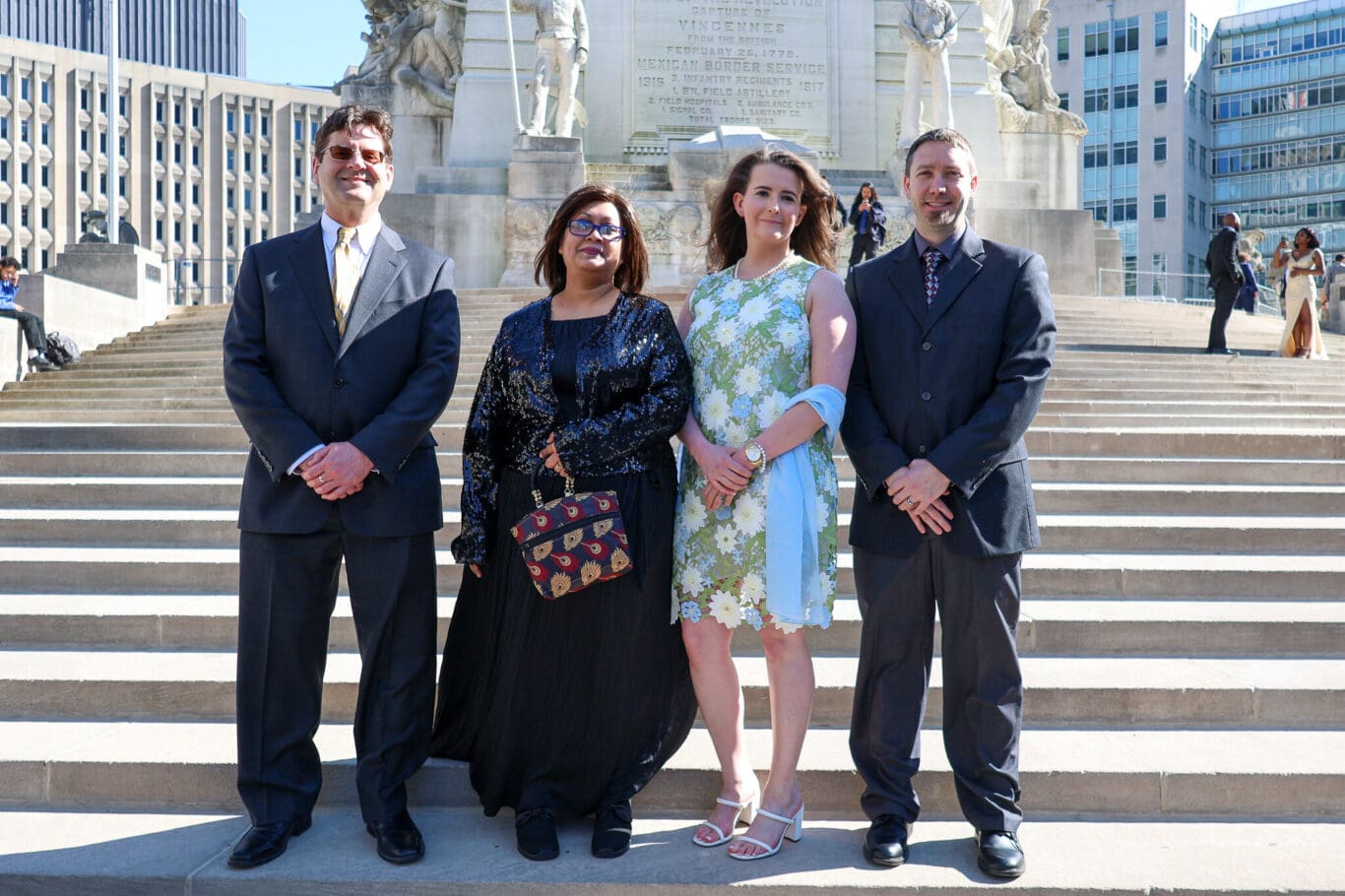
“Looking back, I realize I was holding onto an idea of what I thought I was supposed to do, mostly out of fear of trying something new. The advice I’d give to young professionals is this: embrace what you’re good at, even if it takes you in an unexpected direction. Be open to exploring new opportunities — you’re not locked into one path, and it’s never too late to pivot or take a risk.”
Q: What advice do you have for current BattChallengers in making the most out of their time in the competition?
A: “Maintain a learning mindset. This experience isn’t meant to be easy — and that’s the point. You’ll encounter both successes and failures along the way, and both are incredibly valuable.
“Failure isn’t a setback; it’s data. It tells you where to dig deeper, where to pivot, and how to improve. The technical challenges you face, the deadlines you race toward — they’re all part of the growth process. Embrace the unknown, stay curious and be open to learning not just from your wins, but from the moments that don’t go as planned. That’s what real engineering looks like.”
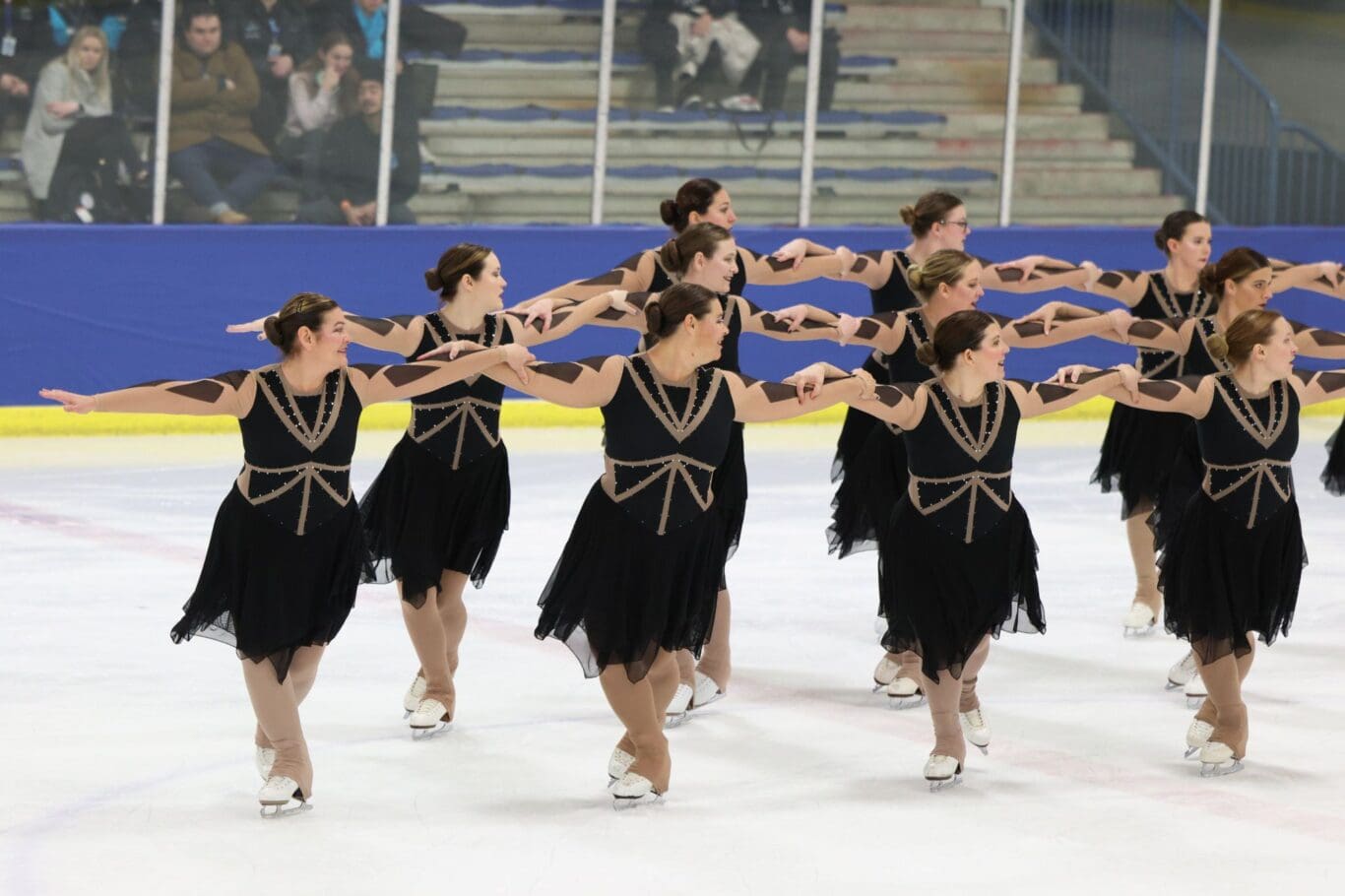
Q: What’s one fun fact about you?
A: “I’ve been a figure skater for over 20 years, primarily focused on singles freestyle. For about 10 years, I competed seriously, and later transitioned into coaching, working with competitive skaters for around seven years. As my professional career progressed, it became difficult to maintain that level of involvement, and I eventually took a break from the sport altogether.
“More recently, I’ve reconnected with skating through a synchronized skating team — something we affectionately refer to as our beer league. It’s been incredibly rewarding to skate recreationally with a group of supportive women.
“Skating has played many roles in my life — athlete, coach, teammate — and it continues to be a grounding force for me. As a woman working in a male-dominated field like engineering, it can sometimes feel isolating. Having an outlet that brings me joy, community and a sense of identity outside of work has made a noticeable difference in how I show up professionally. I’m more balanced, energized and resilient because of it.”
